Join Our Newsletter for Cozy Home Inspiration, Family Fun, and Delicious Recipes Every Week
12 Best Indoor Plants to Clean and Filter Your Air
I started hunting for ways to get fresh air in my bedroom, especially after I wake up feeling sleepy and obstructed. That’s when I stumbled into the world of indoor plants.
Video after video claimed that aloe vera, snake plants, and even spider plants could clean the air, making my bedroom feel like a mini rainforest.
But just as quickly, I ran into conflicting information. Some sources swore by their purifying powers, while others flat-out said it was a myth.
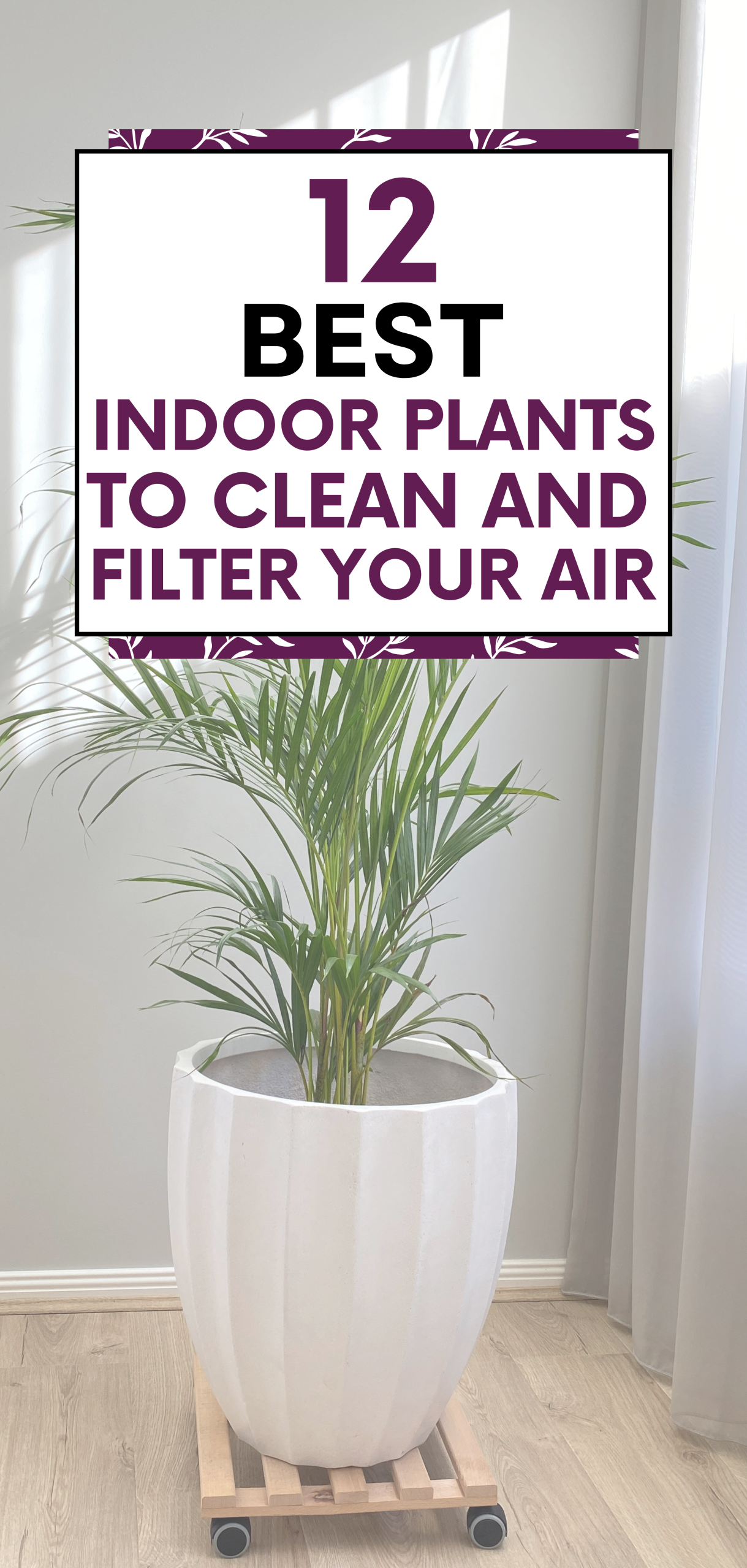
All I wanted was to breathe better at night, but now I wasn’t even sure if indoor plants could actually help or if I was being sold a pretty illusion in a terracotta pot.
Turns out, both sides have a point. The famous NASA study so often cited was based on closed environments like space stations, not our drafty, window-filled homes.
To truly filter your air the way those studies suggest, you’d need thousands of plants crammed into your room (we’re talking jungle status).
And while some CAM plants like snake plants do absorb CO₂ at night, their oxygen output isn’t going to turn your bedroom into a mountain meadow.
That said, what indoor plants can do, on a practical level, is contribute to a feeling of freshness. Their greenery, the moisture they release, and even the subtle changes in scent can make your space feel lighter and more relaxing, especially if you can’t open a window due to pollution or weather.
In the end, I realized I didn’t need scientific proof to know I was sleeping better surrounded by green. Two snake plants near my bed, a peace lily by the door, and a pothos trailing from the shelf brought a calm I didn’t have before.
No, they’re not HEPA filters. But they’re beautiful, and perhaps they are just slightly improving the air. If you want better air quality, pair your indoor plants with a proper air purifier or open a window when you can.
12. Peace Lily (Spathiphyllum)
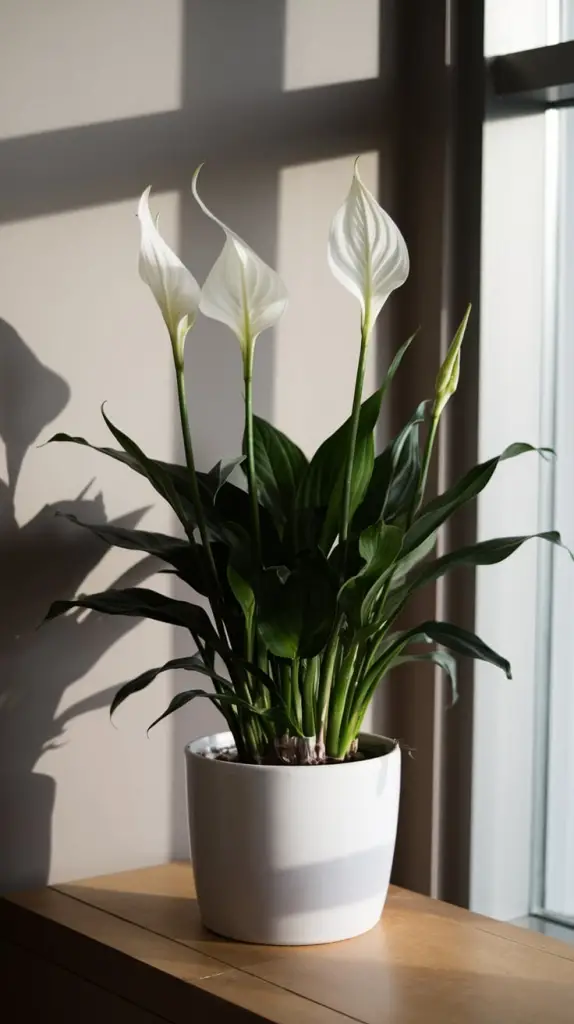
Peace Lilies are one of the most effective indoor plants for removing airborne toxins, especially ammonia, benzene, and formaldehyde.
Air-Purifying Benefits:
- Reduces mold spores in the air.
- Absorbs alcohols, acetone, and trichloroethylene.
Care Tips:
- Keep soil consistently moist but not soggy.
- Thrives in low to medium indirect light.
- Toxic to pets: keep out of reach.
11. Snake Plant (Sansevieria trifasciata)
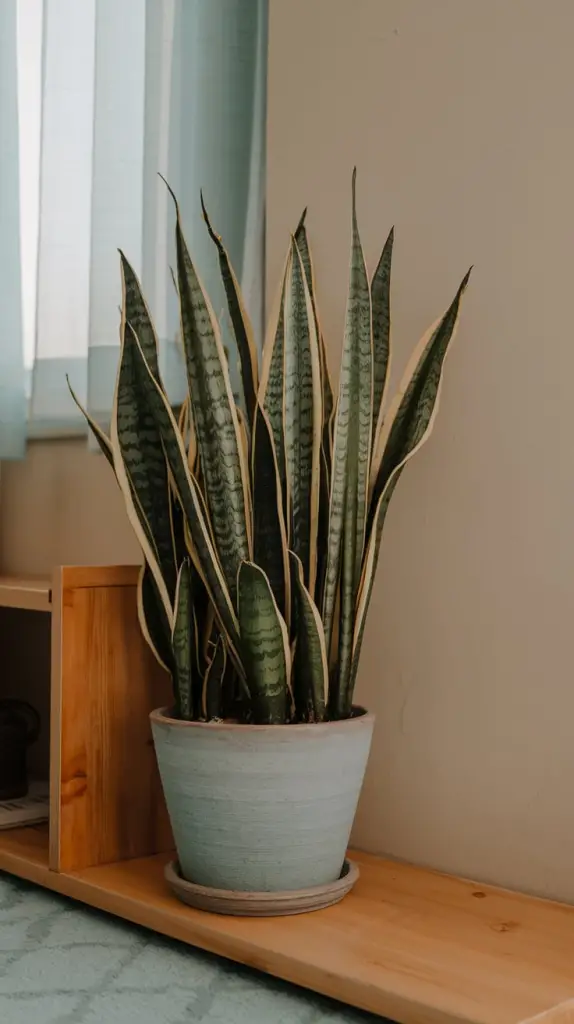
Often called “Mother-in-law’s Tongue”, the snake plant is one of the low-maintenance indoor plants and is known for nighttime oxygen production.
Air-Purifying Benefits:
- Filters formaldehyde, xylene, toluene, and nitrogen oxides.
- Converts CO₂ to O₂ at night.
Care Tips:
- Tolerates low light and infrequent watering.
- Allow soil to dry out between waterings.
- Virtually pest-resistant.
10. Areca Palm (Dypsis lutescens)
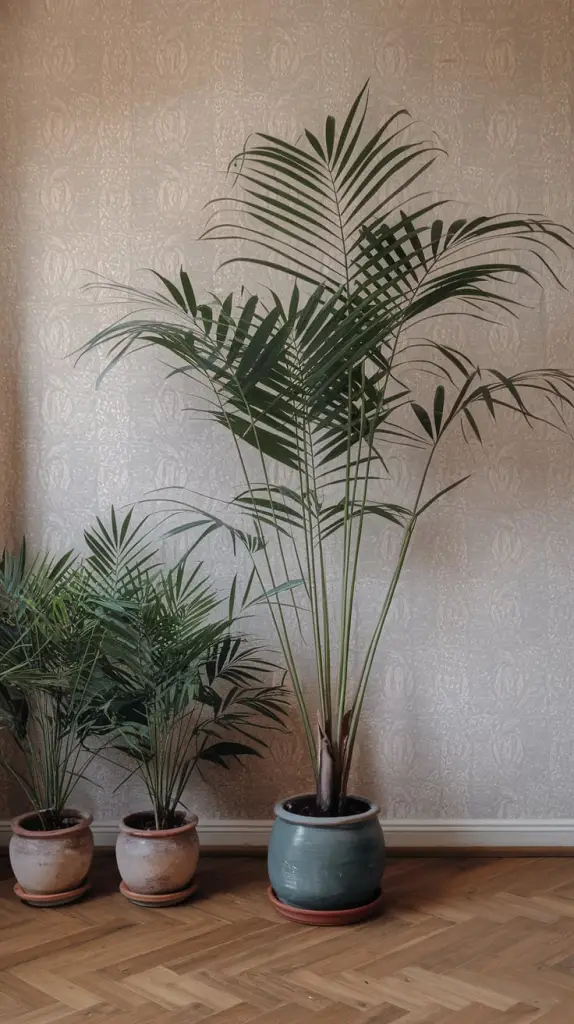
These tropical indoor plants act as a natural humidifier.
Air-Purifying Benefits:
- Excellent for removing carbon monoxide and benzene.
- Releases moisture into the air, perfect for dry environments.
Care Tips:
- Needs bright, indirect light.
- Water thoroughly when topsoil feels dry.
- Prefers well-draining soil.
9. Rubber Plant (Ficus elastica)
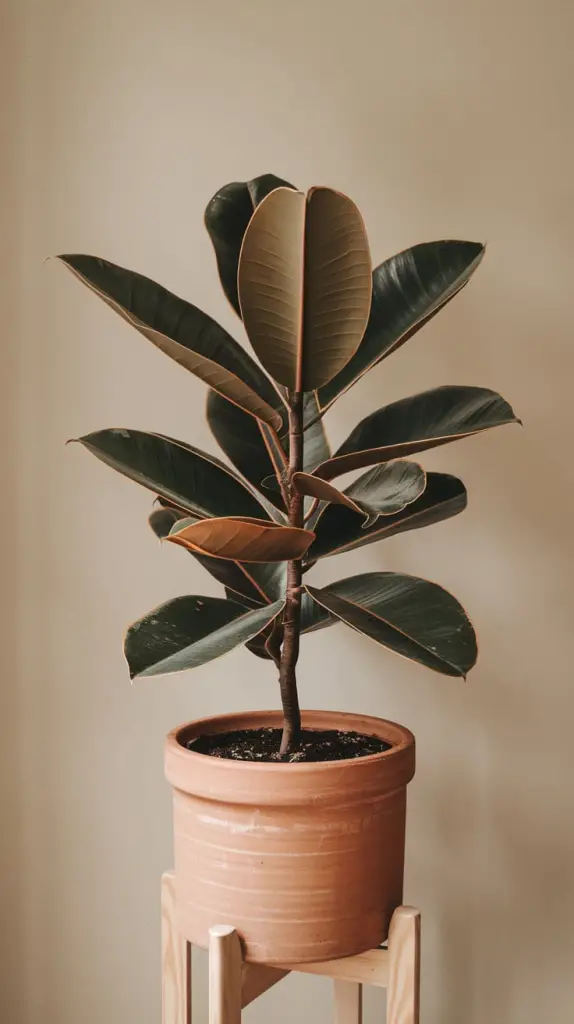
This broad-leafed beauty excels at filtering airborne toxins and looks stunning in minimalist interiors.
Air-Purifying Benefits:
- Removes formaldehyde and other volatile organic compounds (VOCs).
- High transpiration rate increases humidity.
Care Tips:
- Bright, indirect light preferred.
- Allow top inch of soil to dry out before watering.
- Wipe leaves regularly to keep pores clean.
8. Spider Plant (Chlorophytum comosum)
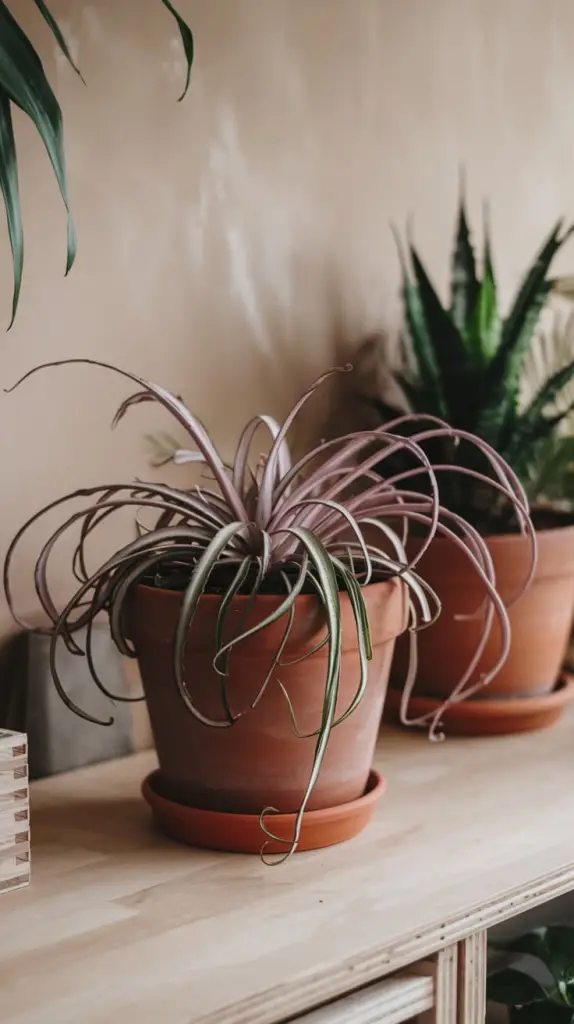
Spider plants are pet-friendly indoor plants and remarkably efficient at cleansing indoor air.
Air-Purifying Benefits:
- Targets carbon monoxide, benzene, and formaldehyde.
- Removes 90% of toxins in enclosed environments in 48 hours (NASA Clean Air Study).
Care Tips:
- Thrives in indirect sunlight.
- Water weekly; don’t allow soil to remain soggy.
- Propagates easily through “pups”.
7. Boston Fern (Nephrolepis exaltata)
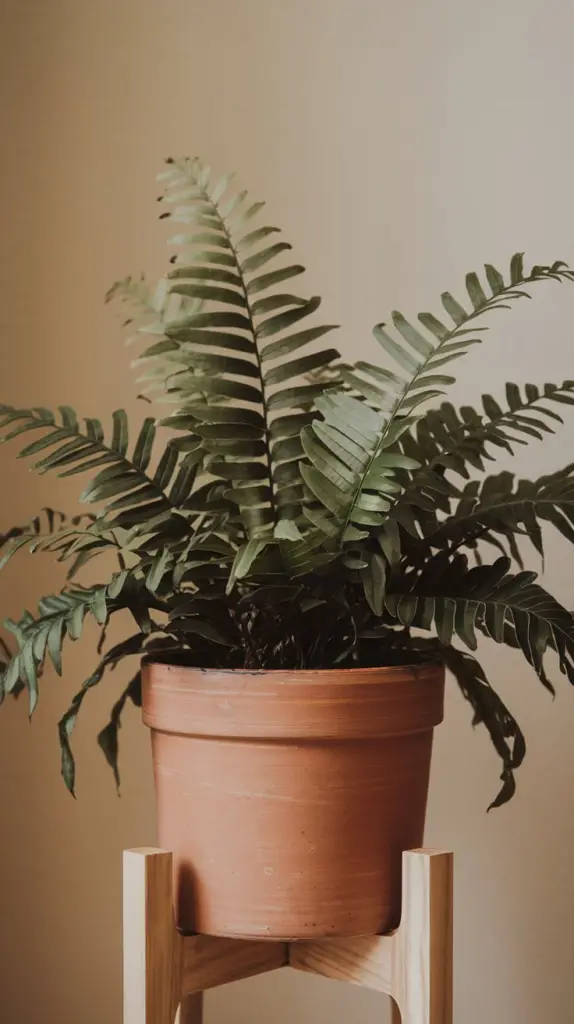
Boston Ferns add a lush, classic look while providing superior humidity and air filtration.
Air-Purifying Benefits:
- Removes formaldehyde, xylene, and airborne pollutants.
- Increases moisture in dry rooms.
Care Tips:
- Keep in a cool, humid location.
- Mist daily or place on a pebble tray with water.
- Requires bright, indirect light.
6. Aloe Vera
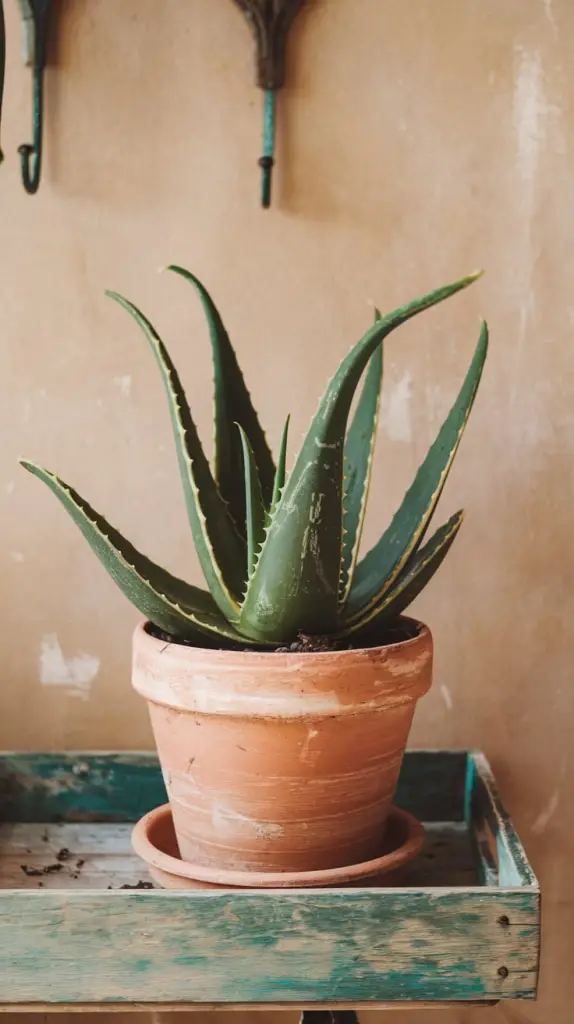
Beyond its medicinal gel, Aloe Vera also purifies the air from harmful chemicals.
Air-Purifying Benefits:
- Absorbs benzene and formaldehyde.
- Indicates air quality with visible leaf spotting when toxins are high.
Care Tips:
- It needs lots of sun, so place it near a south- or west-facing window.
- Water deeply but infrequently.
- Use cactus mix or well-draining potting soil.
5. Dracaena Marginata (Dragon Tree)
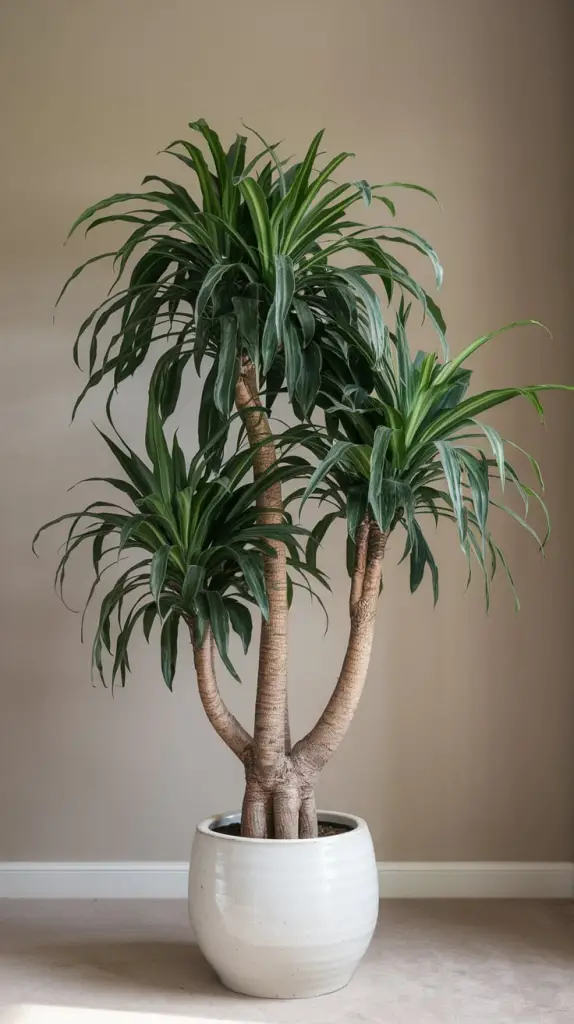
Dramatic foliage indoor plants are perfect for contemporary spaces with powerful air-cleaning abilities.
Air-Purifying Benefits:
- Targets trichloroethylene, xylene, and formaldehyde.
Care Tips:
- Low to bright indirect light.
- Water the soil when it feels dry to the touch.
- Sensitive to fluoride, use distilled or rainwater.
4. Pothos (Epipremnum aureum)
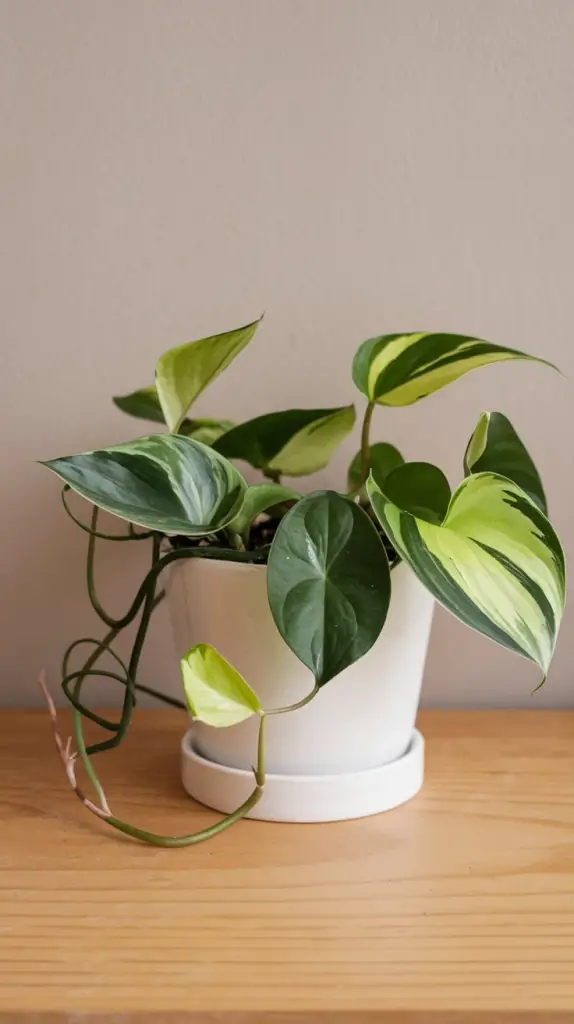
A vigorous vining plant that grows almost anywhere and purifies the air quickly.
Air-Purifying Benefits:
- Removes formaldehyde, benzene, toluene, and carbon monoxide.
Care Tips:
- Tolerates low light and inconsistent watering.
- Allow soil to dry between waterings.
- Can be grown in water or soil.
3. Bamboo Palm (Chamaedorea seifrizii)

This graceful palm improves air quality and acts as a natural humidifier.
Air-Purifying Benefits:
- Filters benzene, formaldehyde, and trichloroethylene.
Care Tips:
- Bright, indirect light; too much sun scorches leaves.
- Keep soil moist but not soggy.
- Fertilize monthly in spring and summer.
2. English Ivy (Hedera helix)
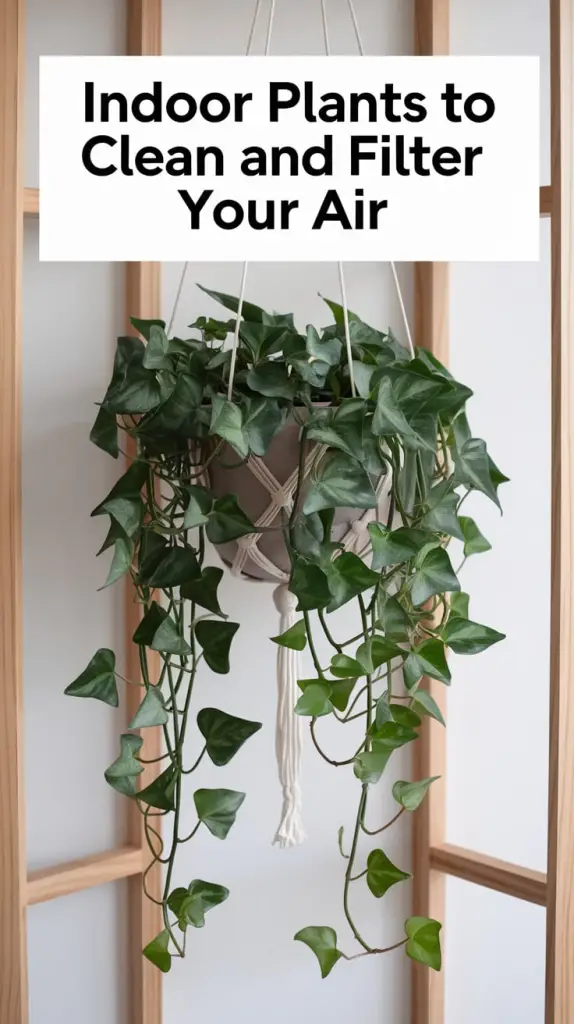
This fast-growing climber is effective at eliminating mold spores and airborne fecal particles.
Air-Purifying Benefits:
- Cleans benzene, formaldehyde, and airborne mold.
Care Tips:
- Requires bright light for optimal growth.
- Keep soil slightly moist.
- Can be grown in hanging baskets or wall planters.
1. Chinese Evergreen (Aglaonema)
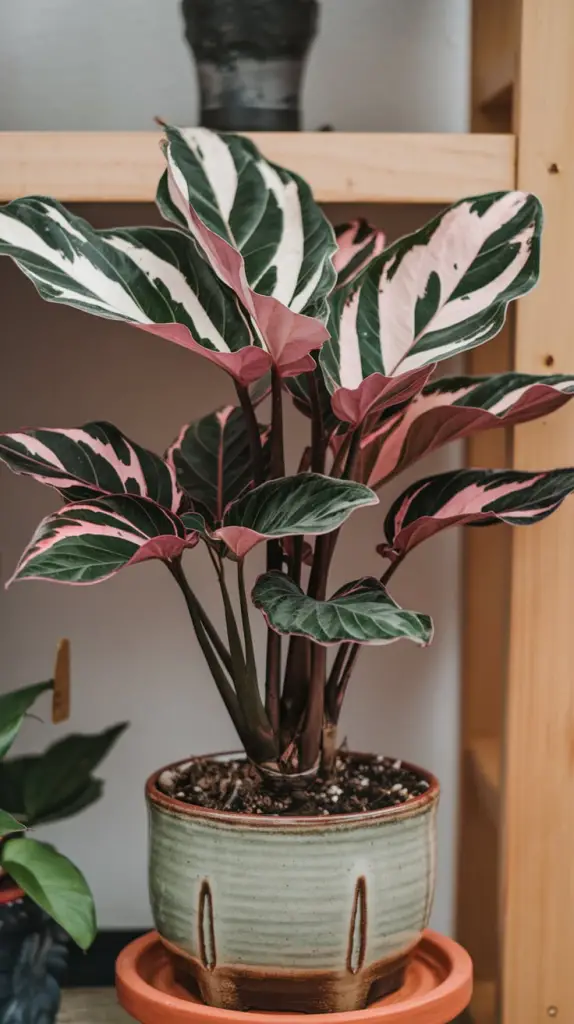
A beautiful and hardy plant with powerful air-cleaning capabilities.
Air-Purifying Benefits:
- Removes benzene and formaldehyde.
- Helps increase humidity.
Care Tips:
- Tolerates low light and low humidity.
- Water moderately, avoid overwatering.
- Wipe leaves to maintain their shine and function.
Conclusion
Integrating air-purifying indoor plants into your home is an effective way to cleanse your living space from invisible pollutants while bringing in natural beauty and calm. Choose the plants that best suit your lighting, humidity, and maintenance preferences to create a clean, green, and health-focused environment.





